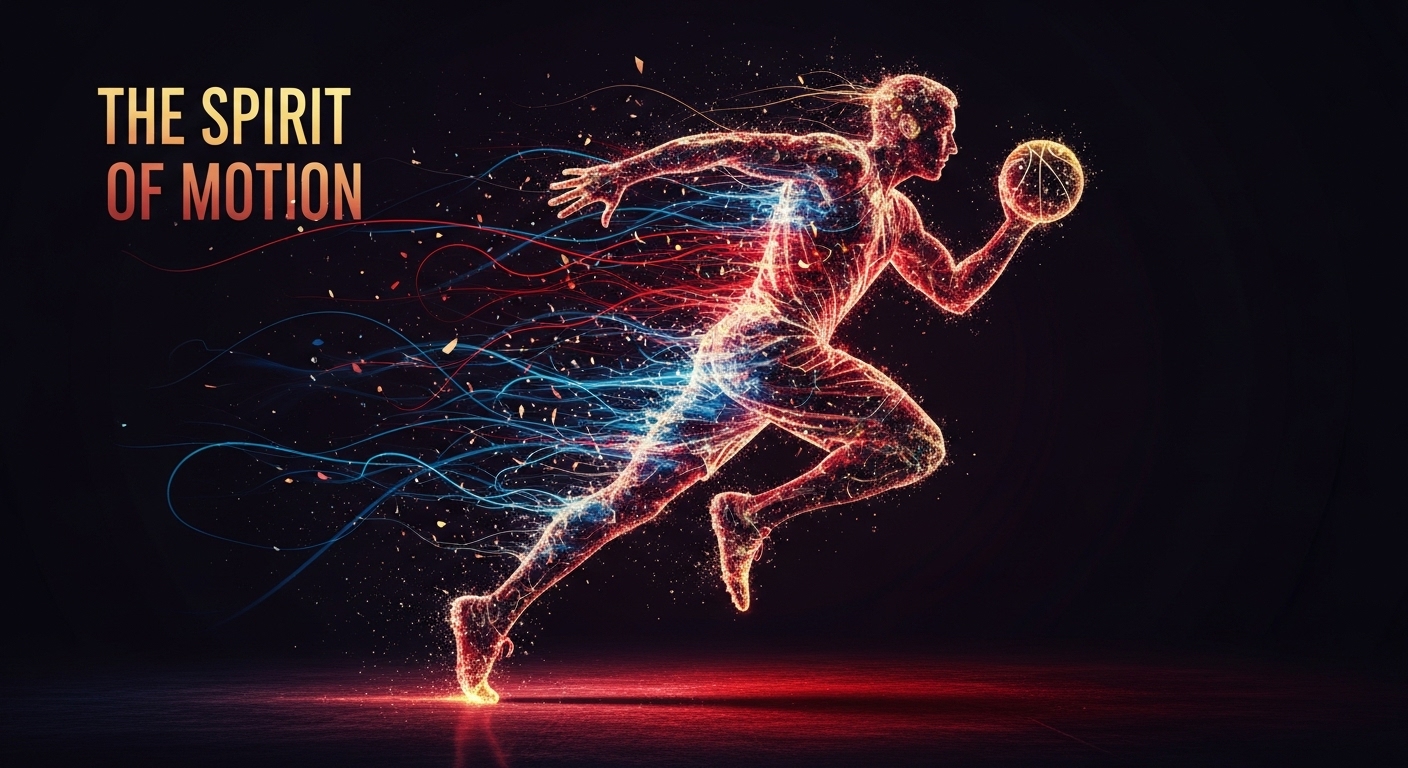Sports have been an integral part of human civilization since the dawn of time. From the ancient arenas of Greece where athletes competed for glory to the modern stadiums filled with millions of cheering fans, sports have evolved into a global phenomenon that transcends culture, language, and geography. They embody the very essence of human aspiration — the pursuit of excellence, the thrill of competition, and the joy of connection. Yet, the beauty of sports lies not only in the games themselves but in their ability to unite people, teach life lessons, and foster resilience.
The Origins of Sporting Culture
The history of sports is deeply intertwined with the story of humanity. Ancient civilizations used sports not merely as entertainment but as rituals that symbolized power, discipline, and community. In Egypt, early forms of wrestling and archery were practiced as both physical training and ceremonial events. In ancient Greece, the Olympic Games began in 776 BC and celebrated the human form and spirit through competition. These games were more than contests; they were acts of devotion to the gods, expressions of civic pride, and demonstrations of physical perfection.
Over time, sports evolved alongside societies. The Romans embraced gladiatorial contests, often brutal but immensely popular among citizens. Medieval Europe saw the rise of jousting and archery as both military training and recreation. In Asia, martial arts developed as both physical discipline and spiritual practice. The unifying thread through all these traditions was the recognition that movement, competition, and skill reflected something essential about being human. Sports were — and remain — a mirror of our collective identity.
The Modern Transformation of Sports
The Industrial Revolution of the 18th and 19th centuries transformed not only economies but also the world of sports. As cities grew and working hours stabilized, people began to have leisure time, and organized sports flourished. Football, cricket, baseball, and basketball all emerged as codified games with standardized rules and governing bodies. Schools and universities incorporated athletics into their programs, recognizing the role of physical activity in education and character development.
By the 20th century, sports had become a powerful social institution. The rise of mass media brought games to every household. Radios, and later televisions, made it possible for fans to follow their favorite teams without leaving home. The Olympics were revived in 1896 and quickly became a symbol of global unity and friendly competition. From Jesse Owens defying racial prejudice in Berlin in 1936 to the “Miracle on Ice” in 1980, the world witnessed how sports could transcend political and social divides.
Sports as a Global Language
One of the most remarkable qualities of sports is their universality. A football kicked in Brazil, a basketball dribbled in the United States, or a cricket ball bowled in India — each of these actions communicates the same passion understood across borders. Sports speak a language that does not require translation. It is a language of effort, emotion, and mutual respect.
In a world often divided by race, religion, or ideology, sports provide common ground. When fans gather in stadiums or watch international tournaments, nationalities blend into a shared identity of supporters. For ninety minutes, the divisions of the world seem to fade. Whether it’s the World Cup, the Olympics, or a neighborhood game, sports have an unparalleled ability to bridge human differences.
The Emotional Power of Victory and Defeat
Sports are not merely about physical ability; they are emotional narratives written in real-time. Every game tells a story — of triumph, heartbreak, resilience, and redemption. For athletes, victory represents the culmination of years of discipline, sacrifice, and perseverance. Yet, defeat often teaches more profound lessons. It reveals character, humility, and the courage to rise again.
For fans, these emotional arcs create deep connections with teams and players. A last-minute goal, a buzzer-beater, or a come-from-behind win can unite entire communities in celebration. Conversely, losses can bring collective sorrow, but also solidarity. This emotional investment is what makes sports unique. They are not scripted dramas, yet they evoke emotions more genuine than any fiction.
Sports and Identity
Sports also play a defining role in shaping identity — personal, local, and national. For individuals, participation in sports can foster self-confidence and purpose. For communities, local clubs and school teams can strengthen social bonds and pride. For nations, sporting success often becomes a reflection of collective achievement and resilience.
Consider how certain sports become cultural symbols. Football in Brazil is more than a game; it is a way of life that reflects creativity and joy. Cricket in India is an emotional experience that unites over a billion people. Hockey in Canada or rugby in New Zealand goes beyond competition — it is national identity manifested on a field. When a nation’s athletes perform on the world stage, they carry not just their own hopes but those of millions. Their victories become shared triumphs, and their struggles, collective stories.
The Role of Sports in Youth Development
For young people, sports provide invaluable lessons that extend far beyond physical fitness. They teach discipline, teamwork, leadership, and perseverance. A child who learns to respect rules on the field often learns to respect rules in life. The teamwork required in sports mirrors the collaboration needed in school, work, and community.
Moreover, sports provide a healthy outlet for energy and emotion. In an age of digital distractions, obesity, and mental health challenges, physical activity through sports becomes essential. It builds not just stronger bodies but stronger minds. Participation in sports also teaches emotional intelligence — how to cope with pressure, handle defeat gracefully, and maintain focus. These life skills are foundational for personal growth and future success.
Women in Sports: Breaking Barriers
For much of history, sports were a male-dominated domain. But over the past century, women have fought for and achieved tremendous progress in athletics. The participation of women in sports has reshaped cultural perceptions of gender, strength, and ability. From Billie Jean King challenging inequality in tennis to Serena Williams redefining excellence, women athletes have become global icons.
The rise of women’s leagues in football, basketball, and cricket has inspired millions of girls to dream beyond societal limits. Female athletes now command the same respect and admiration as their male counterparts, proving that skill and determination know no gender. The fight for equal pay and media representation continues, but the momentum is undeniable. Every victory by a woman on the field is also a victory for equality and empowerment off it.
The Economics of Sports
Today, sports are not only cultural phenomena but also economic powerhouses. The global sports industry generates billions annually through broadcasting rights, sponsorships, merchandise, and tourism. Major events like the FIFA World Cup, the Super Bowl, and the Olympics drive entire economies, influencing advertising, infrastructure, and employment.
Athletes themselves have become brands. Figures like LeBron James, Lionel Messi, and Naomi Osaka represent not just sporting excellence but also business empires. Yet, with commercialization comes complexity. The pressure to perform, the influence of money, and the ethics of sponsorship often raise difficult questions about the purity of sports. Balancing profit with integrity remains one of the great challenges of modern athletics.
Technology and the Future of Sports
The 21st century has ushered in a technological revolution that is transforming sports. Advanced analytics, wearable devices, and virtual simulations allow teams to optimize performance with precision. Video assistant referees, goal-line technology, and instant replays have made officiating fairer, though not without controversy.
Meanwhile, the rise of eSports has expanded the very definition of competition. Digital gaming tournaments now attract millions of viewers and professional players, blurring the line between physical and virtual sports. Social media, too, has changed how fans engage. Athletes can communicate directly with followers, creating personal brands and deeper connections.
However, technology also presents challenges — from privacy concerns to performance-enhancing innovations that risk compromising fair play. As we look to the future, the question will be how to embrace innovation without losing the spirit of human competition that defines true sport.
Sports and Society: The Power to Inspire Change
Throughout history, sports have often served as a platform for social and political expression. Athletes have used their visibility to advocate for justice and equality. Muhammad Ali’s stand against war and racism, Tommie Smith and John Carlos’s raised fists at the 1968 Olympics, and Colin Kaepernick’s kneel for racial equality — all demonstrate how sports can amplify voices of change.
These moments remind the world that athletes are not just performers but citizens with influence. Sports can challenge societal norms, start conversations, and inspire movements. They can reflect the injustices of society while offering a vision of unity and hope. When handled with courage, the sports arena becomes a stage not only for physical excellence but for moral leadership.
The Psychological Side of Sports
Beneath the physical competition lies a profound psychological landscape. Success in sports often depends as much on mental strength as on physical ability. Athletes must learn to manage pressure, focus under stress, and recover from setbacks. The mental demands of professional sports have led to greater awareness of mental health.
In recent years, prominent athletes have spoken openly about anxiety, depression, and burnout. This openness has reshaped conversations about mental well-being in all fields, not just athletics. Coaches and sports psychologists now emphasize mindfulness, visualization, and emotional resilience. The mind, after all, is the most powerful muscle in sport — one that determines whether the body can reach its true potential.
Sportsmanship: The Heart of the Game
At its core, the true spirit of sports lies in sportsmanship. Winning is important, but how one wins — or loses — defines character. Respect for opponents, fairness in play, and humility in victory are timeless virtues that sports teach better than any classroom.
From shaking hands after a tough match to helping a fallen competitor, these small gestures embody the essence of human decency. Sportsmanship reminds us that the ultimate goal is not domination, but growth. Every match, regardless of the outcome, is an opportunity to become better — as an athlete and as a person.
The Impact of Global Events on Sports
Global crises, such as wars or pandemics, have repeatedly tested the resilience of sports. The COVID-19 pandemic, for instance, brought sporting events to a halt, emptying stadiums and isolating athletes. Yet, it also highlighted the unbreakable bond between sports and society. When competitions resumed, even in empty arenas, they brought hope and normalcy to millions.
Sports have always reflected the world’s challenges but have also helped heal its wounds. After natural disasters, economic hardships, or social unrest, sports often serve as a unifying force. They remind people that life continues, that effort still matters, and that joy can still be found in shared moments of play.
The Future of Sports: Evolving with Purpose
As we move deeper into the 21st century, sports continue to evolve. Sustainability, inclusivity, and innovation are becoming central themes. There is growing awareness about environmental impact, with organizations seeking to host eco-friendly events. Inclusivity is expanding, with adaptive sports offering opportunities for athletes with disabilities to showcase extraordinary talent and resilience.
Youth engagement remains crucial. The next generation of athletes and fans will define the future of sports culture. The challenge will be maintaining the essence of genuine play in an increasingly commercial and digital world. The heart of sports must remain rooted in joy, connection, and fair competition.
Conclusion: Why Sports Will Always Matter
Sports are more than games; they are reflections of who we are and what we aspire to be. They teach us to strive, to endure, to respect, and to dream. They remind us that failure is not the end but a step toward growth. In every race, every match, and every contest, we see a microcosm of life itself — unpredictable, challenging, yet beautiful.
The roar of a crowd, the sweat on an athlete’s face, the quiet focus before a serve or a sprint — these moments are not just entertainment; they are shared human experiences. Sports connect us to something larger than ourselves, something timeless. Whether played in ancient arenas or modern stadiums, on grassy fields or virtual screens, the essence remains unchanged: sports celebrate the indomitable spirit of humanity.
And that is why, no matter how the world changes, sports will never lose their power. They will continue to inspire, unite, and remind us of what it truly means to be human.



